new posts in all blogs
Viewing: Blog Posts Tagged with: Charlesbridge, Most Recent at Top [Help]
Results 1 - 25 of 46
How to use this Page
You are viewing the most recent posts tagged with the words: Charlesbridge in the JacketFlap blog reader. What is a tag? Think of a tag as a keyword or category label. Tags can both help you find posts on JacketFlap.com as well as provide an easy way for you to "remember" and classify posts for later recall. Try adding a tag yourself by clicking "Add a tag" below a post's header. Scroll down through the list of Recent Posts in the left column and click on a post title that sounds interesting. You can view all posts from a specific blog by clicking the Blog name in the right column, or you can click a 'More Posts from this Blog' link in any individual post.
Will's Words: How William Shakespeare Changed The Way You Talk. Jane Sutcliffe. Illustrated by John Shelley. 2016. Charlesbridge. 40 pages. [Source: Library]
First sentence: Dear Reader: We have to talk. I have failed you. I set out to write a book about the Globe Theatre and its great storyteller, William Shakespeare. About how the man was an absolute genius with words and wove those words into the most brilliant and moving plays ever written. But that's just the trouble. You see, I wanted to tell you the story in my own words. But Will Shakespeare's words are there, too, popping up all over the place. It's not my fault. Really. Will's words are everywhere. They're bumping into our words all the time, and we don't even know it.
Premise/plot: Sutcliffe's picture book for older readers does a great job introducing readers to the sixteenth century theatre. And her emphasis on "Will's Words" shows the relevance Shakespeare still has in today's world. It is part narrative. But on each spread, she focuses on words--phrases--Shakespeare either invented himself (coined) OR kept alive (sustained) through the longevity of his plays. She uses the word or phrase in her narrative, and then explains it. Each word is explained and/or defined. Sometimes this includes "what it meant then, what it means now." But she also always includes: WHERE it came from--which play, which act, which scene.
Words include:- for goodness' sake
- what's done is done
- too much of a good thing
- outbreak
- excitement
- of a sudden
- wild goose chase
- fashionable
- money's worth
- hurry
- with bated breath
- a sorry sight
- heart's content
- well behaved
- send him packing
- good riddance
- love letter
- laugh oneself into stitches
- foul play
- make your hair stand on end
- cold-blooded
- hot-blooded
- bloodstained
- dead as a doornail
- seen better days
- into thin air
- amazement
- the short and long of it
- not budge an inch
- eaten out of house and home
- green-eyed monster
- household words
My thoughts: I really loved this one. It is for older readers. I don't think the typical preschooler is going to care about the word origin of the phrase "dead as a doornail." But for older students (mid-to-upper elementary on up) what a treat!!! Be sure to watch the Horrible Histories music video about Shakespeare! © 2016 Becky Laney of
Becky's Book Reviews
Join Us!
Our next regular meeting will be held on Wednesday, January 25th at 10 a.m. in the College Station Barnes & Noble (if you'd like to see us before then come to the holiday party - see info in next section). Topic: Make 2017 Goals. We'll also discuss news and provide encouragement. Gentle critique begins at 9:30 a.m. Bring copies of 5 double-spaced pages of your work in progress. Those who have time may go to lunch at a local restaurant. Members and friends welcome.
Annual Conference
Brazos Valley Blooms -- SCBWI-BV 25th Annual Conference!
REGISTRATION BEGINS December 15, 2017. You will want to jump in early for this one. Prepare for keynotes, manuscript consultations, portfolio showcase, box lunch, dinner(pay your own way)...
Date: March 4, 2017
Time: 8 a.m. (registration) to 5 p.m.
Place: Covenant Presbyterian Church, 220 Rock Prairie Road, College Station, TX 77845
SPEAKERS
Kathi Appelt, award-winning author

Kathi's books have won numerous national and state awards, including the Irma and Simon Black Award, Children’s Choice Award, Teacher’s Choice Award, the Oppenheimer Gold Award, Parent’s Choice Award, Storytelling World Award, Growing Good Kids Award, Texas Writer’s League Award for Children’s Literature, the Texas Institute of Letters Award, Best Books for Young Adults, VOYA Top of the Shelf Award, and a host of others. Kathi is a founding member of SCBWI Brazos Valley
Her first novel, The Underneath, was a National Book Award Finalist and a Newbery Honor Book. It also received the Pen USA Award, and was a finalist for the Heart of Hawick Children’s Book Award.
www.kathiappelt.comAssociate Editor: Karen Boss, Charlesbridge Publishing"Karen is an associate editor at Charlesbridge where she works on fiction and nonfiction picture books and middle-grade novels. She holds a MA in Children’s Literature from Simmons College and regularly acts as a mentor for their Writing for Children MFA program. Karen also has an MA in higher education administration and worked at colleges and in the nonprofit sector for the first 15 years of her career. She still works part-time in development at Hyde Square Task Force, a nonprofit that works with at-risk youth in Jamaica Plain. Some authors she’s currently working with are David L. Harrison, Jane Yolen, Nancy Bo Flood, Rich Michelson, and debut author Tami Charles. Her favorite children’s book is The Trumpet of the Swan by E. B. White, and she thinks that Holes by Louis Sachar is quite possibly the best thing ever written."
excerpt from www.highlights foundation.org. Hornbook Interview-podcastDonna Cooner, award-winning authorDonna, a Texas native, is a three-time graduate of Texas A&M University. A former teacher and school administrator, she now teaches teachers and principals at Colorado State University where she is the director of the School of Teacher Education and Principal Preparation. She lives in Fort Collins, Colorado, with her two labs and a cat named Stu. She's a big fan of chocolate and laughing (not necessarily in that order).
Donna is the author of over twenty picture books and was a founding member of the Brazos Valley Society of Children's Bookwriters and Illustrators. She has also written children's television shows for PBS and textbooks for future teachers. SKINNY was her debut novel for young adults, followed by CAN'T LOOK AWAY.
www.donnacooner.com

E.B. Lewis, award winning-ArtistratorE.B. has illustrated over seventy books for children, including Nikki Grimes’ Talkin’ About Bessie: The Story of Aviator Elizabeth Coleman, the 2003 Coretta Scott King Illustrator Award Winner; Alice Schertle’s Down the Road, an ALA Notable Book; Tolowa M. Mollel’s My Rows and Piles of Coins, an ALA Notable Book and a Coretta Scott King Honor Book; Bat Boy and His Violin by Garvin Curtis a Coretta Scott King Honor Book, and Jacqueline Woodson’s The Other Side, a 2002 Notable Book for the Language Arts.
www.eblewis.com

Associate Literary Agent: Jennifer March Soloway, Andrea Brown AgencyJennifer works closely with Executive Agent Laura Rennert. She enjoys all genres and categories, such as laugh-out-loud picture books and middle-grade adventures, but her sweet spot is young adult.
Jennifer is a suspense junkie. She adores action-packed thrillers and mysteries, full of unexpected twists. Throw in a dash of romance, and she’s hooked! She’s a sucker for conspiracy plots where anyone might be a double agent, even the kid next door. She is a huge fan of psychological horror that blurs the lines between the real and the imagined. But as much as she loves a good thriller, she finds her favorite novels are literary stories about ordinary teens, especially those focused on family, relationships, sexuality, mental illness, or addiction. In such stories, she is particularly drawn to a close, confiding first-person narrative.
Nearby Lodging:
La Quinta Inn & Suites College Station South
1838 Graham Rd, College Station, TX 77845
Phone:(979) 704-6100
Sleep Inn & Suites
Address: 1846 Graham Rd, College Station, TX 77845
Phone:(800) 424-6423
Courtyard Bryan and College Station
3939 Texas 6 Frontage Rd, College Station, TX 77845
(979) 695-8111
***
2016 Best Children's Books
Market Your Book
Hope you are ready for a fabulous new year!!!!
Disclaimer: The views expressed here are my own, and not necessarily those of the SCBWI.

By:
Betsy Bird,
on 6/9/2016
Blog:
A Fuse #8 Production
(
Login to Add to MyJacketFlap)
JacketFlap tags:
Best Books,
Charlesbridge,
autobiographies,
Marc Scheff,
Best Books of 2016,
2016 reviews,
Reviews 2016,
2016 autobiographies,
Shelley Gill,
Reviews,
Add a tag
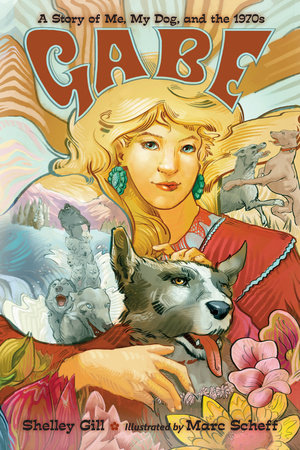 Gabe: A Story of Me, My Dog, and the 1970s
Gabe: A Story of Me, My Dog, and the 1970s
By Shelley Gill
Illustrated by Marc Scheff
Charlesbridge
$12.95
ISBN: 978-1-57091-354-9
Ages 10 and up
On shelves now
The older I get the more I like children’s books that don’t slot easily into neat little categories. Gone are the days when every book you read was easily cataloged, neat as a pin. It may be a nightmarish wasteland out there for catalogers, but the fluidity of books these days speaks to their abilities to serve different kinds of readers in different kinds of areas. Even biography sections of libraries and bookstores are morphing. I remember when Siena Siegel’s To Dance was published and we, the children’s librarians, had to come to terms with the fact that we had an honest-to-goodness children’s graphic novel autobiography on our hands (a rare beastie indeed). I’ve not really seen a book to shake up the biography sections in a similar way since. That is, until now. Gabe: A Story of Me, My Dog, and the 1970s is a textbook case of not being a textbook case. Autobiographical and deeply visual, it offers a slice of 1970s life never approached in this manner in a children’s book before. Different kinds of readers require different kinds of books to feed their little brains. This is a book for dog and pet readers, throwing them into the past headfirst and keeping them there thanks to some truly beautiful art. An original.
Growing up in Florida, Shelley Gill had enough of the vapid, polluted culture she’d grown up with. At seventeen she was out. The year was 1972 and Shelley was volunteering in the medical tent of the first Rainbow Gathering at Table Mountain. When she wasn’t patching up people she was patching up pets. And there was one pet in particular, a blue merle husky mix she named Gabe. When the party was over, Gabe was left and so Shelley kept him by her side. Together they hitchhiked, lived in New Orleans for a time, tried Colorado, suffered through NYC, were parted, reunited, and ultimately found their final home in Alaska. Gill chronicles her life through the dog that helped make that life possible. Backmatter consists of five great historical moments alluded to in the book.
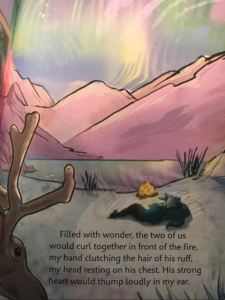 When I was growing up, the 1970s was just that decade we never quite got to in history class because we ran out of time by the end of the school year (thanks, WWII). A child of the 1980s myself, it would take me years and years and a significant chunk of my adult life to get a grasp on that time period. Children’s books that talk about the 70s or are set in the 70s aren’t exactly plentiful. Either they’re entirely about the Vietnam War or the Civil Rights movement or. . . . yeah. No. That’s about it. So Shelley Gill’s decision to place her own story inextricably within the times in which she lived is fascinating. She starts off not with Woodstock (as you might expect) but the far lesser known Rainbow Gathering of 1972. Backmatter relays information about The Vietnam War, the protests, the Civil Rights Movement, the Women’s Movement, and The Age of Aquarius. None of it is enough to serve as a focus for the story, but they do at least offer context and groundwork for kids willing to seek out additional information on their own on any of the mentioned topics.
When I was growing up, the 1970s was just that decade we never quite got to in history class because we ran out of time by the end of the school year (thanks, WWII). A child of the 1980s myself, it would take me years and years and a significant chunk of my adult life to get a grasp on that time period. Children’s books that talk about the 70s or are set in the 70s aren’t exactly plentiful. Either they’re entirely about the Vietnam War or the Civil Rights movement or. . . . yeah. No. That’s about it. So Shelley Gill’s decision to place her own story inextricably within the times in which she lived is fascinating. She starts off not with Woodstock (as you might expect) but the far lesser known Rainbow Gathering of 1972. Backmatter relays information about The Vietnam War, the protests, the Civil Rights Movement, the Women’s Movement, and The Age of Aquarius. None of it is enough to serve as a focus for the story, but they do at least offer context and groundwork for kids willing to seek out additional information on their own on any of the mentioned topics.
It’s a surprisingly slight book for the chunk of Gill’s life that it contains. That may have more to do with the author’s square focus on the dog more than anything else. Gabe is first and foremost the center of the book. Gill’s marriage, and even her eventual commitment to dog sledding, pale in the face of this owner/pet love story. In 2011 Adam Gopnik wrote a piece for The New Yorker called “Dog Story” in which he talked about pet owners’ blind adoration of their own dogs. It’s a fun piece because, amongst other things, it really clarified for me the fact that I am just not a dog person. If you have a friendly dog I’ll pet it like crazy and enjoy its company, but other people’s dogs are like other people’s children. You appreciate their existence on this globe (hopefully) but wouldn’t necessarily want one of your own. The interesting thing about Gabe is that Gill makes no bones about his bad qualities. She loves him, psychopathic tendencies and all. He is her constant companion through thick and thin and (craziest of all) the 1970s. I don’t feel particularly gushy towards dogs, but a good writer allows you to feel emotions that aren’t your own. And in that last page, where Shelley cuddles her dying dog? That, I felt.
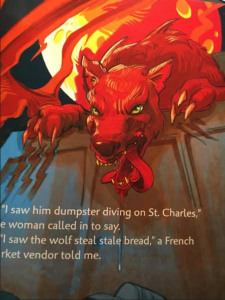 The text is great, no question, but would be merely okay with a lesser illustrator. So a lot of the heavy lifting going on in this title is due the talents of Marc Scheff. I would love to hear the story of how Marc came to this particular book. A quick look at his various websites and you can see that he describes himself as the kind of artist who creates, “portraits that blend the fantastic and the surreal.” In Gabe Scheff scales back his more sumptuous tendencies, but not by much. He’s sticking to reality for the most part, but there’s one moment, when people are exchanging rumors of an escaped devil dog terrorizing the citizens of New Orleans, where he allows the paper he paints to gorge itself in a blood red beast awash in snarls and drool. Shelley herself is the kind of woman Scheff typically likes to paint. A 20th century Rossetti model, all flowing hair and latent hippie tendencies. Farrah Fawcet would have been envious. And Gabe is consistently fascinating to watch throughout. Scheff’s challenge was to make him tame enough that a girl would do anything to keep him by her side, but also wild enough to attack at a moment’s notice. For the book to work you have to like Gabe on some level. That may be the most difficult challenge of the book, but Scheff is up to the task and the end result is a dog that, at the very least, you respect on some level.
The text is great, no question, but would be merely okay with a lesser illustrator. So a lot of the heavy lifting going on in this title is due the talents of Marc Scheff. I would love to hear the story of how Marc came to this particular book. A quick look at his various websites and you can see that he describes himself as the kind of artist who creates, “portraits that blend the fantastic and the surreal.” In Gabe Scheff scales back his more sumptuous tendencies, but not by much. He’s sticking to reality for the most part, but there’s one moment, when people are exchanging rumors of an escaped devil dog terrorizing the citizens of New Orleans, where he allows the paper he paints to gorge itself in a blood red beast awash in snarls and drool. Shelley herself is the kind of woman Scheff typically likes to paint. A 20th century Rossetti model, all flowing hair and latent hippie tendencies. Farrah Fawcet would have been envious. And Gabe is consistently fascinating to watch throughout. Scheff’s challenge was to make him tame enough that a girl would do anything to keep him by her side, but also wild enough to attack at a moment’s notice. For the book to work you have to like Gabe on some level. That may be the most difficult challenge of the book, but Scheff is up to the task and the end result is a dog that, at the very least, you respect on some level.
For all that I love the art of the book, there is one element of the design I’d change in a heartbeat, if I had that power. That would be (and this is going to sound crazy to you if you haven’t seen the book yet) the size of the font on each new chapter’s first page. Somebody somewhere made the executive decision to shrink that font down to teeny, tiny, itty-bitty, oh-so-miniscule words. In some chapters this is clearly done to fit a large amount of text into a particular part of the accompanying illustrations. The trouble is that it just looks awful. Right from the bat it sets the wrong tone for everything. It was with great relief that I turned the first page to discover a far larger, lovelier font for most of the rest of the book. Yet with every new chapter there it would be again. That small, horrid little font. A weird complaint, you bet, but for a book that relies so heavily on attractive visuals, this seems an unfortunate misstep.
The more graphic and visual a children’s book, the more opportunities to really put the reader in a historical time and place. For the 9-year-old that picks up and reads this book, the 1970s might as well be the 1670s. Yet together Gill and Scheff transport their young readers. From the sweltering heat of New Orleans to the dry chill under an Aurora Borealis, you are there. Gill writes what she knows and what she knows is the story of her best dog. A moving, eye-popping, ambitious, genre-busting little number. I guarantee you this – you’ll find nothing else like it on your bookshelves today.
On shelves now.
Source: Final copy sent from publisher for review.
Like This? Then Try:
Professional Reviews:
Websites:
- For Shelley Gill’s website go here.
- For Marc Scheff’s website go here.
Alternate Cover Art:
Apparently this was the original cover. Had I seen it first, I probably wouldn’t have minded those eyes, but now? So glad they changed ’em. It looks like she’s mere moments away from taking a big ole bite of doggie.
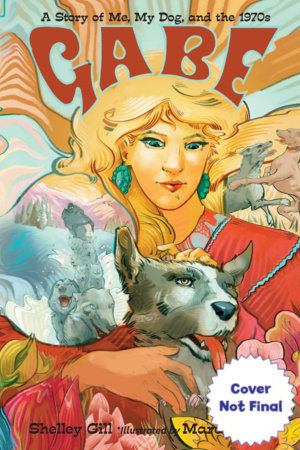


By:
Betsy Bird,
on 4/19/2016
Blog:
A Fuse #8 Production
(
Login to Add to MyJacketFlap)
JacketFlap tags:
Reviews,
nonfiction,
Gareth Hinds,
Best Books,
Charlesbridge,
middle grade nonfiction,
narrative nonfiction,
Pamela S. Turner,
Best Books of 2016,
2016 reviews,
Reviews 2016,
2016 middle grade nonfiction,
middle school nonfiction,
Add a tag
 Samurai Rising: The Epic Life of Minamoto Yoshitsune
Samurai Rising: The Epic Life of Minamoto Yoshitsune
By Pamela S. Turner
Illustrated by Gareth Hinds
Charlesbridge
$16.95
ISBN: 9781580895842
Ages 10 and up
On shelves now
When you read enough children’s books published in a single year, folks tend to believe that you’ve an ability to spot trends in the general literature. Trend-spotting is easy enough when you’re dealing with picture books (hot in 2016: Bears rampaging through picnics and blobfish!) but books written for older readers are trickier. I think I’ve hit on at least one incredibly popular trend for the current year, however: Overwhelming depression and sadness. Whether it’s baby foxes are getting their legs blown off in landmines, dads being deadbeat, or girls falling down wells, 2016 is officially The Year of the Hankie. So you can imagine the glee with which I devoured Samurai Rising. “A samurai fights for honor and survival in a real-life Game of Thrones,” reads the blurb for the book (minus the torture and nudity, of course). In producing a fantastic look at the true story behind Japan’s most famous samurai, Turner doesn’t just cheer up an otherwise depressed literary year. She highlights a figure too long ignored in America. Say goodbye to boredom. Say hello to crazy-eyed heroics and an anti-hero for the young masses.
On the book’s title page is written a small alert. “WARNING: Very few people in this story die of natural causes.” No lie, just fact. This is the story of Minamoto Yoshitsune. A boy who “could not yet walk when his father left him a lost war, a shattered family, and a bitter enemy.” Yoshitsune’s father (not the brightest samurai of all time) throws away his family’s comfortable existence protecting Japan’s Retired Emperor when he decides to kidnap the guy instead. Swiftly defeated by his rival Taira Kiyomori, the man’s son, little Yoshitsune, is spared but eventually sent to train as a monk. Determined to win back his family’s honor, the boy runs away and with the help of a friendly lord becomes a full fledged samurai. Not a moment too soon either. Forces are brewing and Yoshitsune’s older brother Yoritomo needs his brother’s help to revolt against Kiyomori’s reign. Through it all, Yoshitsune doesn’t just show the heart of a warrior. He shows he has the guts and brains to carry out even the craziest campaign. But with trouble brewing at home, it may be his own family that proves the deadliest enemy of all. Author’s Notes, Time Lines, a Glossary, Chapter Notes, and a Bibliography appear as well.
I was at a conference recently where the terms “creative nonfiction” and “narrative nonfiction” got tossed about like so many ping-pong balls. These terms are generally produced when someone writes a work of nonfiction that reads like a novel. In order to do this and yet still retain even a modicum of historical accuracy, the author in question must bend over backwards to get everything right. Fifty-whopping-two pages, or so, at the back of the book are dedicated to Turner’s chapter notes alone. Here you’ll find every quotation and historical detail cited (Turner also writes an intro to these notes, marking this as the first time I’ve ever seen an author sell the reader on reading them, since who could resist trying to figure out, “why Yoritomo didn’t use ninjas”?). As for Turner’s writing, you forget almost instantly that this is a work of nonfiction. This is both a good and bad thing. Good, because it proves to young readers that there’s more to nonfiction than what you’ll find in a textbook. Bad because life, unlike fiction, doesn’t always adhere to our understanding of narrative rise and fall. When Minamoto’s enemy Kiyomori died without ever having confronted Yoshitsune, I was momentarily baffled. Of course Turner, skillful as she is, is able to naturally call upon Yoshitsune’s older brother as the new enemy, and it’s done with slow, exquisite care.
When you’re watching a musical, the songs have to serve the story. You can’t just have characters burst into a melody without a reason. Likewise, a nonfiction book can be laden with facts, but only if they serve the narrative to its best advantage. Turner has all kinds of tricks up her sleeves, and integrating facts into the story is one of her greater strengths. She can move from the story of Yoshitsune learning how to be a samurai to a description of the brilliant work of engineering that is a samurai’s armor or sword with aplomb.
Even with all this, Turner’s working at a natural disadvantage. Her story is set in the 12th century. Source material from that time? Not exactly copious. So she relies upon informed speculation, i.e. what a character may have seen or may have considered in one scene or another. A number of years ago I read a book called Wild Boy: The Real Life of the Savage of Aveyron which was a true history of a child who lived in the wild and was brought back to “civilization” near the end of the French Revolution. The author leaned heavily on a plethora of “probablys” which is no crime. Honestly, it informs the reader as to what they do or do not know. Still, it can prove distracting if too many are clustered in one spot. The only time I found myself irked in a similar way here was around the beginning of the book when Minamoto and a gold merchant were avoiding the samurai. From “the homey smell of wood smoke probably drew the weary travelers to wayside inns” to “The teenage runaway probably watched, mouth agape, as entertainers performed the popular tales of his time”, I found my willingness to go along with Turner’s speculations stretched, if never quite broken. Fortunately it’s the only time in the book I found Turner’s reliance on probability too overt. For the most part, she does a fine job of keeping everything copacetic.
I was also taken with the humor of the book. Judicious use of it in any nonfiction title is a delicate art. Here, the author has the advantage of time (no one’s going to read about the beheadings of the 1100s and think “Too soon!”). So when she pulls out lines like “News of severed heads travels fast,” you can’t but help but admire the wordplay’s moxie. Ditto, “If things went badly, Kiso had the usual samurai backup plan: kidnap the Retired Emperor” (this line works better after you see how many times the poor guy gets kidnapped in the course of his life – a calming retirement it is not).
The inclusion of Gareth Hinds’ art in the book was good planning on someone’s part (mostly likely Art Director Susan Sherman, according to Turner’s Acknowledgements). Though he’s illustrated the occasional title for other authors (Gifts from the Gods) generally Gareth sticks to his own graphic novel adaptations of classics like The Odyssey or Beowulf or King Lear. A meticulous hand, Hinds’ interstitial art keeps the narrative moving without distracting from it. And while it did have the odd personal problem of making me really want a Minamoto Yoshitsune graphic novel (ahem ahem!), for the most part I think it’ll be of greatest use to those students that need a little visual stimulation with their descriptive texts.
Here’s a pretty basic question for the book: Is Minamoto a hero? The comparison to Game of Thrones on the book’s blurb isn’t all that wrong. Things get pretty ethically dicey in the midst of power plays and wars. Honestly, coming out of this book I had particular sympathy for two people in particular and neither one of them was Minamoto. Minamoto’s heroism in terms of bravery cannot be called into question, but if we’re trying to figure out why he comes across as sympathetic, a lot of that can be attributed to our innate sense of fairness, or lack thereof. He starts off clawing his way up, already at a disadvantage thanks to dear old dad, and then just when everything seems to be working out for him his own brother stabs him in the back (figuratively and nearly literally). He deals decently at times, establishing law and order at critical moments. Then again, he’s not against lighting the occasional peasant village on fire like some insane 12th century version of streetlights. And so I say to teachers and the leaders of bookgroups, if you are doing this book with a group of kids and you need a topic of discussion, just ask this: What is a hero? You’re bound to get some pretty interesting answers after the kids read this book.
As I write this review, the hottest musical on Broadway right now is Hamilton by Lin-Manuel Miranda. It seems to me that we’re seeing a lot of narratives right now that discuss scrappy youngsters, eager to make their mark on the world, no matter the cost to themselves or others. So hey, if you need an idea for a new musical, have I got a book for you! Bringing to the attention of American kids new historical heroes from cultures they may not have any familiarity with is a difficult proposition. Turner and Hinds tackle the challenge with a kind of manic glee. The end result is infinitely readable and downright fun. So pile on the other tear-drenched novels for the kiddos. As long as I have a plucky samurai kid not throwing away his shot I’ll be satisfied. More fun than it deserves to be and a great read.
On shelves now.
Source: Galley sent from publisher for review.
Like This? Then Try:
Videos:
And, naturally, it has a trailer:


By:
Becky Laney,
on 4/5/2016
Blog:
Becky's Book Reviews
(
Login to Add to MyJacketFlap)
JacketFlap tags:
war,
picture books,
dogs,
World War II,
picture books for older readers,
Charlesbridge,
library book,
2016,
2016 Cybils-Eligible,
books reviewed in 2016,
Add a tag
War Dogs. Kathryn Selbert. 2016. [April 2016] Charlesbridge. 48 pages. [Source: Library]
First sentence:
Rufus's best friend, Winston Churchill, is a busy man, but most days Rufus and Winston share a walk.Premise/plot: Essentially, War Dogs is a picture book biography of Winston Churchill during the Second World War told from the point of view of his poodle, Rufus. The book has plenty of Churchill quotes throughout. These are set apart from the main text, and are easily identifiable. One of the quotes is:
The road to victory may not be so long as we we expect. But we have no right to count upon this. Be it long or short, rough or smooth, we mean to reach our journey's end. August 1940
My thoughts: I loved, loved, loved, LOVED this one. War Dogs would definitely be more of a picture book for older readers than a story you'd share aloud with preschoolers. But. I think picture books for older readers are important and necessary, and can be quite LOVELY. I do think that picture books can be for everyone--people for all ages. So I'd definitely recommend this one. It would be a great introduction--picture book introduction--to the Second World War, and to Winston Churchill in particular. So if you're a history lover or a dog lover, you should definitely consider picking this one up!!!
I love the text. I love the illustrations. I love how each quote is sourced. Not all picture book biographies show their work when it comes to research. This one does! (Can you tell that I tend to love research myself!)
Text: 5 out of 5
Illustrations: 4 out of 5
Total: 9 out of 10
© 2016 Becky Laney of
Becky's Book Reviews

By: JOANNA MARPLE,
on 12/9/2015
Blog:
Miss Marple's Musings
(
Login to Add to MyJacketFlap)
JacketFlap tags:
Interview,
picture book,
picture books,
Poland,
Illustrators,
nursery rhymes,
Charlesbridge,
GABE AND GOON,
Iza Tripani,
Add a tag
I have known Iza several years and enjoy following a really consistent strong book career. We also share a love of hiking and covered bridges! And Iza is not the first Polish illustrator I have had on my blog!
[JM] Illustrator … Continue reading →
Reading Picture Books With Children: How to Shake Up Storytime and Get Kids Talking About What They See. Megan Dowd Lambert. 2015. Charlesbridge. 176 pages. [Source: Review copy]
In Reading Picture Books WITH Children, Megan Dowd Lambert introduces readers (presumably adult readers) to the whole book approach of reading picture books with children. The whole book approach pays attention to the whole book. Not just the text. Not even just the text and the illustrations. But to the whole book:
- the size of the book--is it big, is it small; is it in landscape or portrait orientation;
- the design of the book--what font(s) are used, what size font(s) are used, how does the font appear on the page, etc;
- the appearance of the book jacket (front, back, spine); the appearance of the book cover underneath the book jacket; is it the same as the book jacket or different? what materials were used on the cover; how was it bound, etc.
- the endpapers; are the endpapers the same in the back as they are in the front; what do they add to the story, etc.
- the front matter; does the story begin before the 'first page' of the text; does it contribute anything to the story;
- the arrangement of the text and illustrations; how much white space is used on a page, are the illustrations on a two-page spread connected or separate; are the illustrations small or big; are the illustrations framed; do they take up the whole page, etc.
- the text itself; what it says, the story, the characters, etc.)
- the illustrations; the style, the technique, the details, the art and craft of it all, etc.
She encourages adults to focus on the whole book when reading with children. Asking children questions during the reading of the book itself. Letting them interrupt the reading of the story to talk about what they're seeing and hearing and asking their own questions. She says that it only seems like it would ruin the flow of a story. She argues that in fact, the more you pay attention to the whole book the more engaged readers become. So it enhances the reading of a book.
Each chapter focuses on a different aspect of a picture book. Each chapter includes multiple examples and shares practical advice. Readers see what types of questions Lambert has in mind. Questions like: "What's going on in this picture? What do you see that makes you say that? What more can we find?" She does include a chapter on sample questions. Here are just a few as an example:
- How does the jacket seem like a poster for the book, pulling us in as readers? What grabs your attention here?
- What information does the jacket give us about the story?
- How does the way the words look tell us how to read the words aloud?
- Does anyone else have a different idea about this picture?
© 2015 Becky Laney of
Becky's Book Reviews
By: Vicky L. Lorencen,
on 11/20/2015
Blog:
(
Login to Add to MyJacketFlap)
JacketFlap tags:
Picture books,
Promotion,
Giveaway,
Charlesbridge,
Writing career,
matt faulkner,
Running Press,
kris remenar,
Media/Publicity,
Helen Wrath,
Groundhog's Dilemma,
Draw with a Vengeance,
Sold first book,
Add a tag
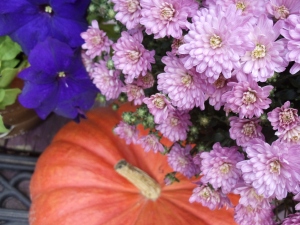
Photo by Vicky Lorencen
We are in for a treat, my little ginger scones. Frog on a Dime is delighted to welcome a very special guest blogger–debut author extraordinaire Kris Remenar.
Leave a comment on this post by Noon (EST) on November 25, and you’ll be entered to win your very own copy of GROUNDHOG’S DILEMMA.
Okay, Frog on a Dime is all yours. Take it away, my darlin’ friend!
Congratulations! You sold your first manuscript! After you’ve popped the champagne to toast your sale, you might wonder – what do I do now?
Become “findable” online. You want people to know who you are, what you write, how they can buy your books, and how to contact you. Build your own website or hire a web designer. If the idea of a website makes your throat close, start with an author page on a book site like Amazon or GoodReads. Explore social media options like Facebook, Twitter, and Instagram. Trying to do everything at once is guaranteed to scramble your brains, so take it slow and do what works for you.
Set up book signings. Contact local bookstores to set up a book launch party. To broaden the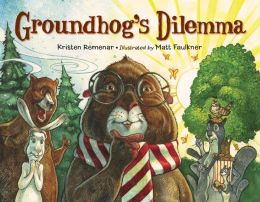 marketing reach, consider creating signing events with other authors/illustrators. Research events where there will be people with a special interest in your book. Because my first picture book is called GROUNDHOG’S DILEMMA, Matt Faulkner and I will be signing books at the Howell Nature Center on February 2nd during their annual Groundhog Day celebration. If you’re willing to travel, see if you can sign books at conferences for groups like the ALA (American Library Association) or NCTE (National Council of Teachers of English).
marketing reach, consider creating signing events with other authors/illustrators. Research events where there will be people with a special interest in your book. Because my first picture book is called GROUNDHOG’S DILEMMA, Matt Faulkner and I will be signing books at the Howell Nature Center on February 2nd during their annual Groundhog Day celebration. If you’re willing to travel, see if you can sign books at conferences for groups like the ALA (American Library Association) or NCTE (National Council of Teachers of English).
Consider school and library events. Check with area libraries to see if they have author events in which you can participate. For school and library events, you want to offer more than just a reading of your book. For younger ones, plan an interactive story time, and for olders, prepare a presentation about your process, or publishing, or ways your book ties into the curriculum.
Overwhelmed? Reach out to experienced authors and illustrators for advice, or ask librarians and teachers what they’ve seen that works. Hire a marketing genius like Kirsten Cappy of Curious City or an educational guru like Deb Gonzales for promotional ideas.
Literary genius Sarah Miller asked me an important question when I was frazzled making multiple promotional plans: “Will it be fun?” After working so hard to get published, don’t forget to enjoy signing the books and interacting with your readers. There is no magic formula to guarantee your bestseller status. Do what works for you, do what makes you happy, and keep writing so you can go through the whole process again soon when your next manuscript sells.

Illustrator Matt Faulkner and Author Kris Remenar
Kristen Remenar is busy promoting and hugging tightly her first picture book, GROUNDHOG’S DILEMMA (Charlesbridge, 2015, illustrated by Matt Faulkner) and her first adult book, DRAW WITH A VENGEANCE: GET EVEN IN INK AND LET KARMA HANDLE THE REST (Running Press, 2015).


Over at Watch. Connect. Read., Mr. Schu is unveiling the cover of Whoosh!: Lonnie Johnson’s Super-Soaking Stream of Inventions. That’s my upcoming picture book with Don Tate, the follow up to our first collaboration, The Amazing Age of John Roy Lynch. Whoosh!, a biography of the inventor of the Super Soaker water gun, comes out […]
Eat Your U.S. History Homework. Ann McCallum. 2015. Charlesbridge. 48 pages. [Source: Review copy]
I love the premise behind Ann McCallum's Eat Your U.S. History Homework. I think it is a clever idea to write a cookbook with American History in mind.
The book only covers early American history. The first recipe--around the times of the Pilgrims settling America--is "Thanksgiving Succotash." The last recipe--around the time of the American Revolution--is for "Independence Ice Cream." There are six recipes in all.
The topics or subjects these recipes are supposed to supplement: Pilgrims at Plymoth, 1620; The Thirteen Original Colonies, 1607-1776; The French and Indian War, 1754-1763; Slaves and the Southern Planation, 1619-1863; The American Revolution, 1775-1783; The Declaration of Independence, 1776.
Some recipes you might recognize under another name. For example: "Revolutionary Honey-Jumble Cookies" and "Lost Bread" are snickerdoodles and french toast.
I like the focus on food. I like the historical tidbits. I like everything but the illustrations.
© 2015 Becky Laney of
Becky's Book Reviews
Happy Friday, Everyone, and welcome back to Perfect Picture Books!
Golly, it's fun to get back in the groove, isn't it? I know some ambitious bloggers kept up with Perfect Picture Book Friday through July and August, but for those of us who have been lazing away our summer on hiatus, what better time then the start of the new school year to explore all the fabulous, fun titles coming out?!
I love sharing every Perfect Picture Book I find, but I especially love it when someone who is a favorite author and good friend has a new book out. Today's title is an absolute delight and I hope you'll all enjoy it... and then rush out and get a copy for yourself and copies for all the littles in your life! :)
Title: Old King Cole
Written & Illustrated By: Iza Trapani
Charlesbridge, August 2015, Fiction
Suitable For Ages: 2-5
Themes/Topics: Nursery Rhymes, Language Fun (poetry)
Opening: "
Old King Cole was a merry old soul,And a merry old soul was he.He called for his pipe, and he called for his bowl,And he called for his fiddlers three.
"Welcome all to the King Cole ball."Said the king to the guests within."We'll romp and we'll dance in the royal hall.Let the tunes and the fun begin!"
Brief Synopsis: Old King Cole stays up so late preparing for his annual ball that when the festivities begin he can't stay awake! Numerous familiar nursery rhyme characters try to come to his rescue, but only the Queen of Hearts can save the day!
Links To Resources: music and lyrics are included on the final page of the book for sing-along fun; take time to explore the illustrations and see how many nursery rhyme characters you can find;
Old King Cole craft;
make a paper crown;
easy recipe for fruit tart (get the mini graham cracker crusts for smaller tarts :))
Why I Like This Book: As you all know, I am a die-hard Iza Trapani fan, so it is no surprise that I love this latest addition to her stellar collection. The story is amusing and fun with enough suspense to keep youngest readers wondering whether Old King Cole will EVER wake up. The rhythmic rhyme is fun to read (and sing!) aloud. The illustrations are bright and delightful with plenty of details to keep pre-readers interested, including the ruckus caused by the rooster, Old Mother Hubbard's dog investigating the treat table, and the goats who take advantage of every opportunity to kick up their heels :) Kids (and grown-ups) will enjoy searching for and finding so many familiar nursery rhyme characters! You won't want to miss this one!!!
For the complete list of books with resources, please visit
Perfect Picture Books.
PPBF bloggers please be sure to leave your post-specific link in the list below so we can all come visit you! I can't wait to see what everyone has to share this week after so long out of the loop!
Have a wonderful weekend, everyone!!! :)
Alphabet Trains. Samantha R. Vamos. Illustrated by Ryan O'Rourke. 2015. Charlesbridge. 32 pages. [Source: Review copy]
First sentence: Tear the ticket. Load the freight. Sound the whistle. Raise the gate. Clank! Chug-chug! Whoosh! Alphabet trains.
Premise/plots: Alphabet Trains is a train-themed alphabet book for young readers. An author's note at the back of book provides more information on each train. A few trains are just types of trains, but other trains are specific trains. I like learning which trains are real, and where each train is located. For example, "K is for Komet, traveling through the night. L is for Leonardo Express--a trip to Rome postflight." The note reveals, "The Komet runs overnight between Germany and Switzerland. Like a comet in the sky, the train travels at high speed. The Leonardo Express travels back and forth from the airport in Rome, Italy, to the central train station in the city. The trip is just 30 minutes."
My thoughts: I like this one. I like reading and reviewing train books, because I think train books will always have an audience. Little ones like trains. Some really, really, really love trains. Do you have a favorite train book?
Text: 4 out of 5
Illustrations: 3 out of 5
Total: 7 out of 10
© 2015 Becky Laney of
Becky's Book Reviews
Poppy's Best Paper. Susan Eaddy. Illustrated by Rosalinde Bonnet. 2015. Charlesbridge. 40 pages. [Source: Review copy]
First sentence: Poppy loved books. "I might be a writer when I grow up," she told her best friend, Lavender.
Premise/plot: Poppy loves to read and write. She has even almost decided to be a writer when she grows up. So when Mrs. Rose, her teacher, assigns a few writing assignments to the class, Poppy is super-excited. She KNOWS that whatever the assignment, she'll be the best at it because it involves writing. She KNOWS that her teacher will praise her work and read her writing as an example for the class. So Poppy is disappointed and frustrated and ANGRY when other students' work is picked instead. Will Poppy have a chance to shine?
My thoughts: I really liked this one. I liked Poppy. She's a character easy to relate to. We see her at school and at home. We see her "doing" her homework. We see the writing process. This one is easily about writing and school. But it is also about emotions and feelings and learning to deal with them appropriately.
Text: 3.5 out of 5
Illustrations 4.5 out of 5
Total: 8 out of 10
© 2015 Becky Laney of
Becky's Book Reviews
The Golden Dreydl. Ellen Kushner. Illustrated by Ilene Winn-Lederer. 2007. Charlesbridge. 126 pages. [Source: Review copy]
The Golden Dreydl is an interesting Chanukah themed fantasy novel for children. There is an album that goes along with it. The book and album put a Jewish twist on the Nutcracker story.
Sara, the heroine, of The Golden Dreydl has quite the bad attitude about "having" to celebrate Chanukah and "not getting to" celebrate Christmas like all her friends. But to the family gathering she will go--no matter the fuss. (Sara has an older brother, Seth).
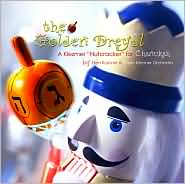
Readers briefly meet Sara, Seth, and their many, many cousins. The "kids" of the family are playing dreydl. Sara is still in a mood. A mood that isn't exactly improved when Tante Miriam shows up with presents for one and all. It's not her fault, mind you, Sara even seems a little inclined to like her present: a golden dreydl. But Seth and her get into a bit of a fight. The dreydl ends up flying through the air and hitting the TV and breaking it. That puts most everyone in a mood.
Readers next join Sara later that evening, for a fantasy adventure. She follows a young girl--a girl claiming to be the Golden Dreydl--through the hole in the TV, I believe. They arrive in a fantasy land, of sorts, with demons, peacocks, a fool, and King Solomon and the Queen of Sheba. There is also much talk of a Tree of Life.
Sara is given a quest, of sorts, to save the girl from the demons/demon king. She has the Fool to help her. A few riddle games are played. First, between Sara and the Fool, and, then later between the Demon King and Sara and the Fool.
For those readers who enjoy fantasy novels, going to different worlds, doing quests, this one is enjoyable enough. If you get a chance to listen to the music, it will probably help you 'enjoy' it even more.
© 2014 Becky Laney of
Becky's Book Reviews

By: JOANNA MARPLE,
on 10/27/2014
Blog:
Miss Marple's Musings
(
Login to Add to MyJacketFlap)
JacketFlap tags:
author,
Interview,
interviews,
picture book,
Africa,
picture books,
Illustrators,
Charlesbridge,
Maasai,
Toby,
Hazel Mitchell,
Perfect Picture Book Friday,
JaNay Brown-Wood,
Imani's Moon,
Add a tag
One of the fun things of being friends with illustrators is getting sneak-peaks at art spreads before the book is published. I fell in love with this story back last Christmas when Hazel was busy working on the front cover, … Continue reading →

By:
Betsy Bird,
on 9/16/2014
Blog:
A Fuse #8 Production
(
Login to Add to MyJacketFlap)
JacketFlap tags:
Charlesbridge,
nonfiction middle grade,
Christine Liu-Perkins,
Best Books of 2014,
Reviews 2014,
2014 reviews,
2014 nonfiction,
2015 Sibert contender,
Reviews,
nonfiction,
Best Books,
Add a tag
 At Home in Her Tomb: Lady Dai and the Ancient Chinese Trasures of Mawangdui
At Home in Her Tomb: Lady Dai and the Ancient Chinese Trasures of Mawangdui
By Christine Liu-Perkins
Charlesbridge
$19.95
978-1-58089-370-1
Ages 9-12
On shelves now
When I say the word “mummy” what springs into your mind? Movies starring Brendan Fraser? Egypt and scarabs and rolls of crumbling papyrus? Absolutely. But what if I told you that recently the best-preserved mummy in the world was found? And what if I told you that not only was she a woman, not only was she surrounded by treasure, but she was also Chinese. Now I’ve known about mummies in South America and frozen on mountains. I know about bog bodies and bodies that were dried out naturally in deserts. But I had no idea that there even was such a thing as a Chinese mummy. In At Home in Her Tomb author Christine Liu-Perkins breaks everything down for you, bringing us a story that’s part forensics, part history, part family story, and all interesting.
Same old story. One minute you’re happily munching muskmelons. The next you’re dead and your corpse has been interred with miniature servants, silk paintings, scrolls, and countless other treasures. And the story might stop right there, except that in two thousand or so years nothing changes. Your body does not rot. Your treasures stay complete and unchanging. So when archaeologists excavated the tomb of Lady Dai, they can be forgiven for being completely astonished by what they found. In At Home in Her Tomb author Christine Liu-Perkins takes you not just into the mystery surrounding Lady Dai’s astonishingly well-preserved body, but also into ancient China itself. A more complete and exciting (and I use that word sparingly) glimpse into Qin and early Han Dynasties for children would be difficult to find.
Why do we love mummies as much as we do? I think it might be a mix of different reasons. Maybe we’re so attached to our own bodies that we find a weird bit of hope in the fact that they might last beyond the usual prescribed amount of time allotted to an average dead carcass. My husband, I should note, hasn’t been completely thrilled with the fact that I leave this book lying about as much as I do. As he rightly points out, what we have here is a bloated corpse book. He’s not wrong and it’s not a particularly attractive dead body either. So why the fascination? Why should I care that her joints were still movable when they found her, or that her fingerprints and toe prints were clear? I can’t rightly say, but it’s a curiosity that kids share with adults. We want to know what happens beyond death. The next best thing, it seems, is to find out what happens to our bodies instead.
 There was a time when the television show C.S.I. inspired whole waves of kids to dream of jobs in forensics. Naturally the real world applications are a lot less fast-paced and exciting than those on television. At least that’s what I thought before hearing about forensic anthropology. Author Liu-Perkins brings it to vivid, fascinating life. It’s not all that’s alluring about this title though since the layout of the book is rather clever as well. Rather than just stick with a single narrative of the discovery of the body and tomb, the author punctuates the text with little interstitial moments that talk about what everyday life for Lady Dai might have been like. Liu-Perkins allows herself a bit of creative freedom with these sections. Obviously we have no idea if Lady Dai “sigh[ed] in weariness” while tending her silkworms. To eschew accusations of mixing fact and fiction without so much as a by your leave, Liu-Perkins begins the book with an Introduction that sets the stage for the interstitial Lady Dai moments. She writes how the artifacts from the tomb caused her to imagine Lady Dai’s life. From there it seems as though the historical fiction sections are directly tied into this statement, clearly delineated in the text from the longer factual sections. Authors these days struggle with making the past live and breathe for their child readers without having to rely on gross speculation. This technique proves to be one answer to the conundrum.
There was a time when the television show C.S.I. inspired whole waves of kids to dream of jobs in forensics. Naturally the real world applications are a lot less fast-paced and exciting than those on television. At least that’s what I thought before hearing about forensic anthropology. Author Liu-Perkins brings it to vivid, fascinating life. It’s not all that’s alluring about this title though since the layout of the book is rather clever as well. Rather than just stick with a single narrative of the discovery of the body and tomb, the author punctuates the text with little interstitial moments that talk about what everyday life for Lady Dai might have been like. Liu-Perkins allows herself a bit of creative freedom with these sections. Obviously we have no idea if Lady Dai “sigh[ed] in weariness” while tending her silkworms. To eschew accusations of mixing fact and fiction without so much as a by your leave, Liu-Perkins begins the book with an Introduction that sets the stage for the interstitial Lady Dai moments. She writes how the artifacts from the tomb caused her to imagine Lady Dai’s life. From there it seems as though the historical fiction sections are directly tied into this statement, clearly delineated in the text from the longer factual sections. Authors these days struggle with making the past live and breathe for their child readers without having to rely on gross speculation. This technique proves to be one answer to the conundrum.
Admit it. A lot of booksellers and librarians are going to be able to hand sell this book to their customers and patrons by playing up the gross factor. Just show that shot on page 24 of the corpse of Lady Dai and a certain stripe of young reader is going to be instantaneously enthralled. Maybe they’ll take it home for closer examination. Maybe their eyes will then skim over to the text where phrases like “her eyeballs had begun falling out” lead to the factors that explain why the decay in the body stopped. They may then flip to the beginning and start reading front to finish, or they might skim from page to page. Honestly, there’s no wrong way to read a book of this sort. When you’re dealing with a title about the “best preserved body in the world” you’re already in pretty awesome territory. Credit then to Christine Liu-Perkins who gives the subject matter her full attention and presents it in such a way where many children will willingly learn about Chinese history in the process. A beautiful book. A heckuva mummy.
On shelves now.
Source: Final copy checked out from library for review.
Like This? Then Try:
Professional Reviews:

There’s a lot that I love about this recent presentation by Lonnie Johnson — rocket scientist, Super Soaker inventor, and pursuer of solutions to the world’s energy problems.
But my favorite part starts at the 5:22 mark with “When I was a kid…” He goes on to discuss how Lost in Space and Robbie the Robot inspired him as a teenager in the 1960s to build his own robot. Except that…
“Nobody told me that the other robots that I was watching [on TV] had people inside.”
Even if he had known, I doubt he would have let it stop him.
And if you’re thinking that Lonnie Johnson would make a great subject for a picture book biography, Don Tate and I agree. Our book, Whoosh! Lonnie Johnson’s Super Stream of Ideas, will be published by Charlesbridge in 2016.
Title: Wild About Bears By Jeannie Brett Published by Charlesbridge, March 2014 Ages: 6-9 Themes: Bears Nonfiction Opening Lines: Eight bear species live on earth today: the polar bear, brown bear, North American black bear, spectacled bear, Asiatic black bear, sloth … Continue reading →
Since it's been awhile, I'm popping on the PBJs today to post a double book review. I was lucky enough to get the above books signed by the author/illustrator
Jeannie Brett and author
Ammi-Joan Paquette. Both books are visually beautiful and offer layers of interest and depth for readers.
Wild About Bears is a non-fiction picture book giving an overview of the eight bear species. The artwork is captivating and lush, and the facts are so intriguing. This is a true family book, and I can see us returning to it for years to come. Visit
Jeannie's website for loads of information and bonus materials.
If you recall, I
reviewed Mustache Baby last year, illustrated by
Joy Ang. I instantly recognized her bold, expressive style on the cover of
Petey and Pru and the Hullabaloo, written by
Ammi-Joan Paquette.
True to picture-book form, this book is a fine marriage of words and images. Ammi-Joan has written a big, bold, hilarious tale full of big, bold, hilarious words.
I love that my near 3 year old walks around saying hullabaloo after reading this book (and knows EXACTLY what it means). The endpapers smartly include definitions - I know I needed to reference it for the word 'defenestration'.
Everything is done with fun and mischief so you might not even realize that you've been hornswoggled into learning a few new words. Thanks, Ammi-Joan!
I was tagged by my friend Jennifer Marsh Morris to participate in a blog tour. I've known Jennifer several years now (hell we were even roomies at a conference) and she's ALWAYS busy! She has two books out soon: the first is called The Ice Cream Shop. It's being released by Scholastic next summer (2014) A second book called The Sea Monster is scheduled for the fall. Here are the critters who inspired the stories ...
... read more about Jenn's books here
http://jemorris.blogspot.com/2013/04/i-was-tagged-by-my-friend-sue-fliess-to.html Here are the questions that I am supposed to answer...
1) What is the working title of your next book?
The title is '
One Word Pearl' written by Nicole Groeneweg.
2) Where did the book idea come from for the book?
Nicole is the winner of The National Association of Elementary School Principals Foundation Annual National Children’s Book of the Year Award Contest - the winning book is published by Charlesbridge Publishing. It's a very cute story about a little girl who loves to collect words!
3) What genre does your book fall into?
It's a picture book.
4) What actors would you choose to play the part of your characters in a movie rendition?
Hmm ... I think it would be an animated story. I am thinking Emma Watson for Pearl.
5) What is the one-sentence synopsis of your book?
Pearl loves to collect words and uses them whenever she can - until one day the words go crazy and chaos ensues!
6) Who is publishing your book?
Mackinac Island Press, an imprint of Charlesbridge.
7) How long did it take you to write the first draft of the manuscript?
In this case the manuscript was already written, so my job was to create a rough layout of the book which took me about 2 weeks.
8) What other books would you compare this story to within your genre?
I think Pearl would relate to Madeline, Fancy Nancy, Lady Bug Girl.
9) Who or what inspired you to write and/or illustrate this book?
Pearl reminded me of ME in a way, I was always cutting out words and pictures and making up stories when I was young, so it wasn't hard to relate. The story also allowed me to work in a more abstract way with some of the images and with collage, the language used is a lot of fun and inspiring!
10) What else about the book might pique the reader's interest?
Definitely the use of words. This is a great book for teachers to use with young children, to get them thinking about words and how they can be used in with the core curriculum. I hope the reader will enjoy the fun pictures too!
Pearl is available on pre-order
http://www.amazon.com/One-Word-Pearl-Nicole-Groeneweg/dp/1934133531/ref=tmm_hrd_title_0?ie=UTF8&qid=1366981322&sr=8-1Check back soon for another author illustrator to link to in this blog tour....
Toodles!
Hazel

By: Hazel Mitchell,
on 3/7/2013
Blog:
Hazel Mitchell
(
Login to Add to MyJacketFlap)
JacketFlap tags:
childrens illustrator,
Hazel Mitchell,
Mackinac Island Press,
One wrod pearl,
nicole groeneweg,
children's books,
language,
words,
speech,
Charlesbridge,
Add a tag
Welcome Pearl!
Pub Date August 2013
ONE WORD PEARL
by
Nicole Groeneweg
illustrated by
Hazel Mitchell
published by Mackinac Island Press
(a Charlesbridge imprint)
My editor for Bill the Boy Wonder: The Secret Co-Creator of Batman was the incomparable Alyssa Pusey at Charlesbridge.
Alyssa is like Batman (without the cave). Like Batman, she championed the underdog, which in this case was this project. Like Batman, she was not afraid, which in this case means she stood by the book—and me—even when concerns about fair use arose. Like Batman, she trusted her partner...Robin.
Alyssa (whom I did not know previously) acquired the manuscript in 2010. Funnily, in 2008, I had written an article about the research I did for the book (an article that morphed into the author’s note). At that time, I was not yet ready to reveal the actual name of Bill’s granddaughter Athena, so I referred to her by a pseudonym: “Alyssa.”
Given the countless alternatives (Amanda, Agatha, Alissa, etc.), that has to be taken as an omen, just as Bruce Wayne took that bat flying through his window as an omen.
One of the most impressive examples of Alyssa’s editorial prowess: in this image, she caught the fact that there was one missing line in the Chinese character for virtue. That’s some well-calibrated sonar.
In 2/13, Alyssa emailed me two photos documenting her work on the book. The “before” photo shows all the emails, layouts, legal correspondence, etc., collected during her three years of work on the book.The “after” photo shows the final archive, after she removed all duplicates, “unnecessary” items, etc.
It took her a full work day to put together that archive. “Now,” she concluded, “it will live down in the Charlesbridge basement forever.”
Maybe she does have a cave after all.
Happy birthday, Alyssa.
Yolanda Scott is editorial director at Charlesbridge. She has edited over one hundred and fifty titles. Charlesbridge is a smaller, independent, family-run publisher based in Boston. They publish about 50 titles a year. About 60% is nonfiction, 40% fiction. Charlesbridge keeps most of their books in print for a very long time.
What is it that makes Yolanda take notice of a book? She shares 9 specific hooks, along with an example of each.
1. Unique, innovative premise.
 |
| After the Kill by Darrin Lunde |
2. Compelling Characters
 |
| The Day-GloBrothers by Chris Barton |
3. Riveting Pot
 |
| Mosquito Bite by Alexandra Siy |
4. Strong Voice
 |
| Pirate Bob by Kathryn Lasky |
5. Interesting Structure
 |
| The Cazuela that the Farm Maiden Stirred by Samantha R. Vamos |
6. Exceptional Art or Visual Potential
 |
| Last Laughs: Animal Epitaphs by J. Patrick Lewis and Jane Yolen |
7. Filling a Hole on the Charlesbridge List
 |
| Alphabet Trucks by Samantha R. Vamos |
8. Skillful, Fluid Writing
 |
| Pigmares by Doug Cushman |
9. Personal Interest of an Editor
 |
| Grin and Bear It by Leo Landry |

By:
Aline Pereira,
on 12/2/2012
Blog:
PaperTigers
(
Login to Add to MyJacketFlap)
JacketFlap tags:
International,
Picture Books,
Non-fiction,
children's non-fiction,
Charlesbridge,
Maya Ajmera,
Cynthia Pon,
Global Fund for Children book,
Week-end Book Reviews,
Week-end book review,
The Global Fund for Children,
Elise Hofer Derstine,
What We Wear. What We Wear: Dressing Up Around the World,
Add a tag
 Maya Ajmera, Elise Hofer Derstine, and Cynthia Pon,
Maya Ajmera, Elise Hofer Derstine, and Cynthia Pon,
What We Wear: Dressing Up Around the World
A Global Fund for Children Book/Charlesbridge, 2012.
Ages: 4-7
Dressing up means something a little different to everyone, but for children dressing up is always important. It might mean trying on a parent’s clothes in the back of a closet, putting on a costume for a performance or holiday, painting your face, playing pretend, or wearing a team uniform for a big game. No matter where, dressing up is special, but the details of dressing up differ considerably depending on the traditions of one’s culture.
Though the outfits vary greatly from place to place, the reasons for dressing up unite us all. This richly photographed book of smiling children from around the world dressing up in every imaginable way will open windows onto other cultures for children everywhere. Whether vibrant beads on the head, neck, and shoulders of a Kenyan child or identical navy blue baseball caps on a Japanese team, it is clear that children everywhere delight in dressing up, whatever the occasion. Captions accompanying the photos suggest the different reasons people wear special clothing and where to find people wearing such garments: folk festivals, cultural events, religious rituals and even school. A world map highlights the countries the photographed children call home, underscoring the point that dressing up is universal.
Children will recognize the familiar in these pages and will also be delighted to see their counterparts in other countries dressed so differently. The pictures are likely to inspire a sense of wonder that may lead young children to think about what they share and how they differ from people of other cultures. The authors also make suggestions for learning more about dressing up all over the world such as going to museums, making masks and costumes on your own, and visiting cultural institutions and festivals.
Expressing one’s self and experiencing one’s culture through clothing is an important part of developing self-identity. This makes What We Wear a perfect book to have on the shelves of a pre-school or primary grade library, inspiring kids to see themselves and children everywhere as part of a global community.
Abigail Sawyer
November 2012

By: Kathy Temean,
on 8/10/2012
Blog:
Writing and Illustrating
(
Login to Add to MyJacketFlap)
JacketFlap tags:
Interview,
Comics,
inspiration,
Process,
authors and illustrators,
Charlesbridge,
Animator,
Illustrator's Saturday,
Ranger Rick Magazine,
Robby Gilbert,
Add a tag
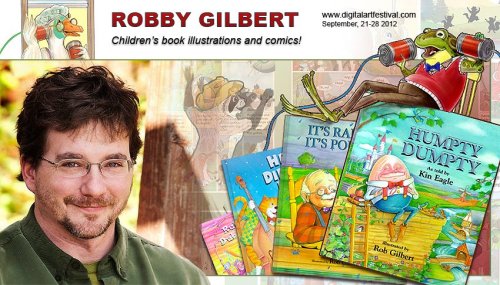
Robby Gilbert began his career in illustration at a young age by doodling additional characters and scenes into the back pages of picture books. Though the practice is universally frowned upon by parents and librarians, Robby was undeterred. He continued drawing. Wisely, his parents sent him to art classes (both to hone his skills and save on library fees). Robby later earned a BFA in illustration and animation and then a M.Ed. He has worked extensively as an illustrator, animator, educator, and art director for such clients as Sesame Street, Nickelodeon, Disney Interactive, the National Wildlife Foundation, and Ranger Rick Magazine.
Robby is currently working on a film-noir inspired series of children’s detective stories. At present, Robby lives in the Pacific Northwest, where, when he isn’t drawing, he can be found teaching illustration and animation to the next generation of compulsive doodlers.
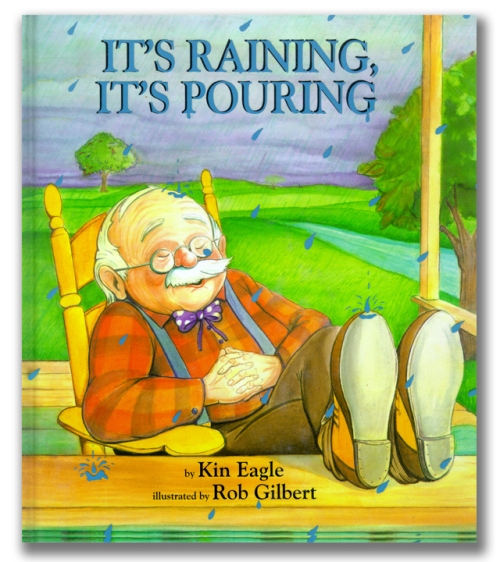
What school did you attend for your BFA?
I attended the School of Visual Arts, in New York and earned a BFA in Media Arts in 1989. Also received an M.Ed in 2006.
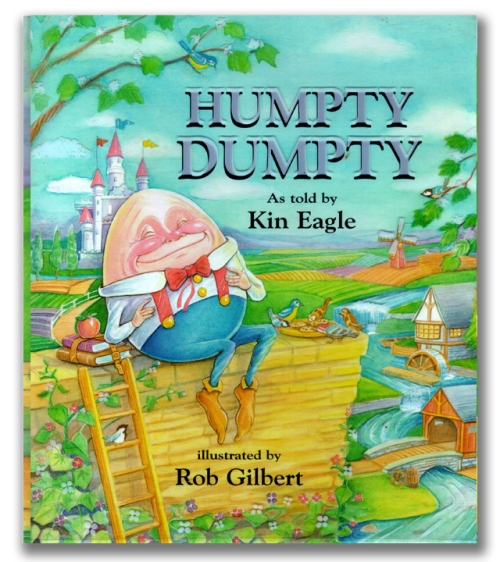
What was the most interesting class that you took?
History of Animation, taught by the late Charles Samu. Also, I loved Harvey Kurtzman’s cartooning classes.
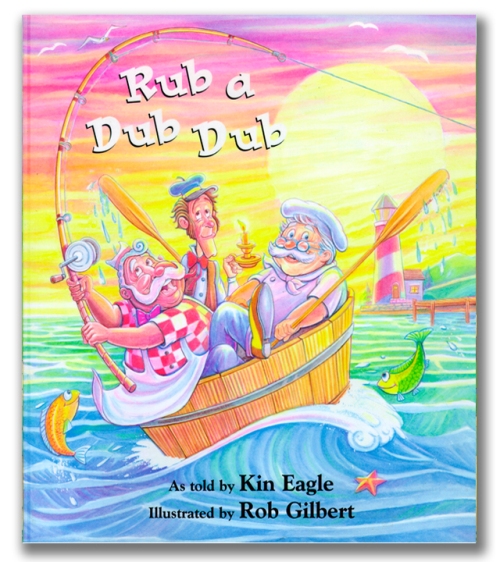
How key were the animation classes you took in shaping your art?
Well, I think that Saturday morning cartoons and early Disney films shaped my art well before school. Animation classes did, however, help me develop drawing skills, speed, and perhaps some goofy acting.
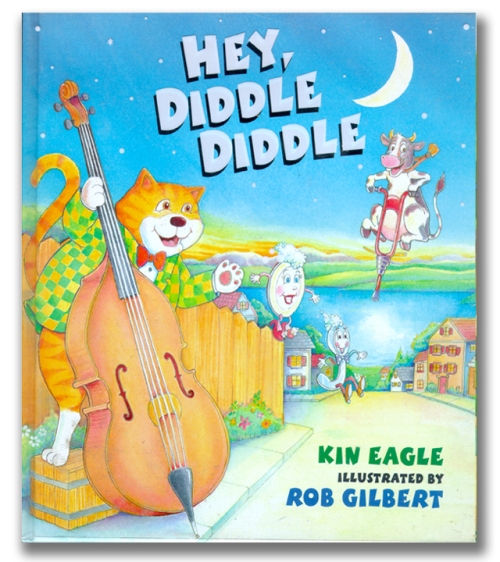
How did you get the job to illustrate Ranger Rick Magazine?
They actually approached me after I animated Rick for a children’s web company.
There’s a full interview with me about just that topic at
https://sites.google.com/site/classicrangerrick/interview-with-robby-gilbert
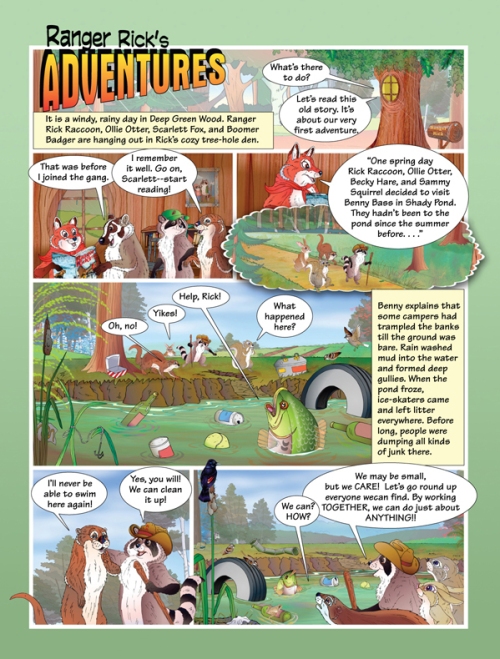
Did the school help you get a job when you graduated?
No. I was hired by an animation company right out of school so I frankly never used the school’s placement services.
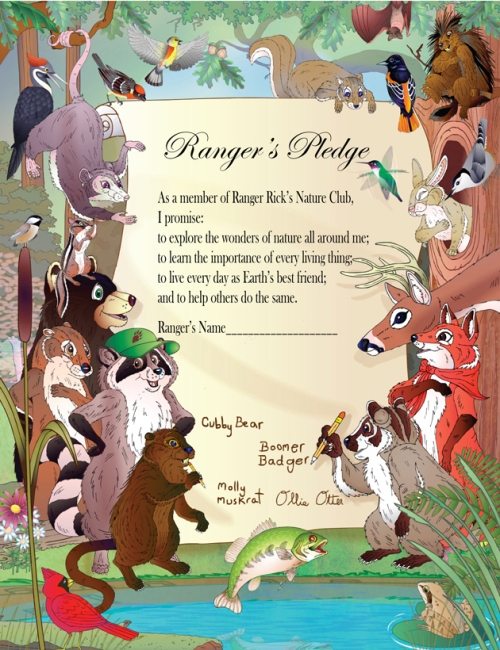
Here is Robby showing his process for the cover of the book dummy of Gumshu, Undercover Dragon.
 1 Comments on Illustrator Saturday – Robby Gilbert, last added: 8/11/2012
1 Comments on Illustrator Saturday – Robby Gilbert, last added: 8/11/2012



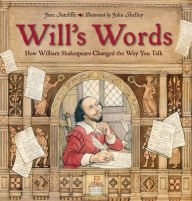
















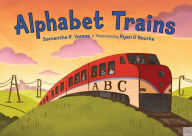
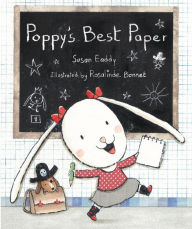











.jpg)


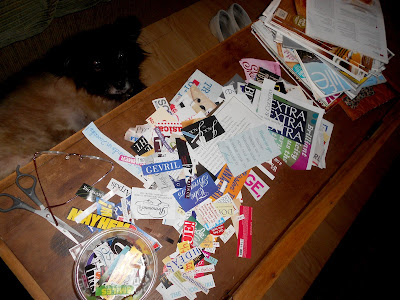

.jpg)













 Maya Ajmera, Elise Hofer Derstine, and Cynthia Pon,
Maya Ajmera, Elise Hofer Derstine, and Cynthia Pon,






What a wonderful way to introduce young people to Shakespeare! Through phrases they still hear and use every day.